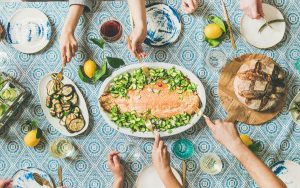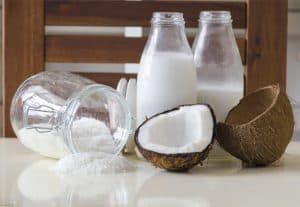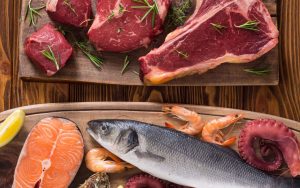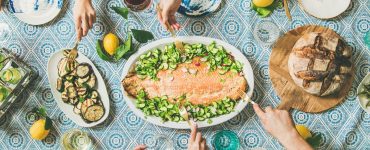Gout is caused by the buildup of uric acid crystals in the joints, leading to excruciating flare-ups and long-term joint damage if left untreated. While gout can be managed through medication and lifestyle changes, one crucial aspect of managing this condition is paying attention to the foods we consume. In particular, high-purine foods have been known to trigger gout symptoms and worsen the overall condition.

In this blog post, we will delve into the world of high-purine foods and identify some of the key culprits that gout sufferers should be aware of. By understanding which foods to avoid, individuals with gout can take proactive steps to reduce the frequency and intensity of gout attacks, ultimately improving their quality of life.
The Link Between Purines and Gout
Purines play a crucial role in the development of gout. When we consume foods that contain purines, our body breaks them down into uric acid. In individuals with gout, the kidneys have difficulty efficiently excreting excess uric acid, leading to its accumulation in the bloodstream. As uric acid levels rise, the formation of sharp, needle-like crystals occurs in the joints, triggering painful gout attacks.
The Production of Uric Acid from Purines
During digestion, purines are broken down into a substance called uric acid. Purines are found in varying amounts in many foods, especially in animal-based sources such as red meat, organ meats, and seafood. Some plant-based foods, such as asparagus and mushrooms, also contain purines, although in lower quantities.
Excess Uric Acid and Gout Symptoms
When uric acid levels become too high in the bloodstream, it can lead to the formation of uric acid crystals. These crystals accumulate in the joints, particularly in the lower extremities such as the big toe, causing inflammation, pain, redness, and swelling. The intensity and frequency of gout attacks can vary, with some individuals experiencing sporadic episodes while others have chronic symptoms.
The Role of Purine-Rich Foods in Gout Flare-Ups
High-purine foods can contribute to the elevation of uric acid levels in the body, increasing the risk of gout attacks. Red meat and organ meats, such as liver and kidneys, are particularly high in purines.
Seafood, including anchovies, sardines, and mackerel, is another category of foods that gout sufferers should be cautious about. Even certain vegetables like asparagus and spinach contain moderate amounts of purines, which may affect some individuals.
Understanding Purine Metabolism and Individual Sensitivity
It’s important to note that not everyone with gout will have the same sensitivity to purines. Some individuals may be more prone to experiencing gout symptoms even with moderate purine intake, while others may have a higher threshold before symptoms are triggered. Each person’s metabolism and genetic factors can influence how their body processes and reacts to purines, making individualized management necessary.
Balancing Purine Intake for Gout Management
While it’s unrealistic to completely eliminate purines from the diet, managing purine intake can significantly reduce the risk of gout flare-ups. Adopting a balanced approach that includes moderate consumption of purine-rich foods and incorporating low-purine alternatives can help strike a healthier balance.
By working closely with a healthcare professional or a registered dietitian, individuals with gout can develop a personalized dietary plan that considers their specific needs and helps manage their condition effectively.
High-Purine Foods to Avoid
Red Meat and Organ Meats
Red meat, such as beef, lamb, and pork, along with organ meats like liver and kidneys, are notorious for their high purine content. These proteins are staples in many diets but can significantly contribute to increased uric acid levels, triggering gout flare-ups. It’s advisable for individuals with gout to limit their consumption of these meats.
Seafood and Shellfish
Certain seafood and shellfish varieties are also rich in purines and should be avoided or consumed sparingly by those with gout. Anchovies, sardines, mackerel, and shellfish like mussels and scallops are known to be high in purines. Instead, opt for lower-purine alternatives like salmon, trout, and shrimp to satisfy seafood cravings.
Certain Vegetables and Legumes
While vegetables are generally considered healthy, some have moderate purine content and may affect individuals with gout. Asparagus, spinach, mushrooms, and cauliflower fall into this category. However, it’s essential to note that the overall health benefits of consuming these vegetables usually outweigh the potential risk for most people. For gout sufferers, moderation is key.
Alcoholic Beverages
Alcohol consumption can have a significant impact on gout symptoms due to its effect on uric acid metabolism. Beer, in particular, has been associated with an increased risk of gout attacks due to its high purine content and the presence of brewer’s yeast. Hard liquors like whiskey and vodka also contain purines and should be consumed in moderation.
Sugary Drinks and Fructose
Sugary beverages, including soda, energy drinks, and fruit juices high in fructose, have been linked to a higher risk of gout. Fructose can increase uric acid levels in the body, leading to gout flare-ups. It’s advisable for individuals with gout to limit their intake of sugary drinks and opt for water, herbal tea, or low-fructose alternatives instead.
Choosing a Gout-Friendly Diet
While it may seem challenging to avoid high-purine foods entirely, it’s important for gout sufferers to make conscious choices to minimize their intake of these triggers. Incorporating a wide variety of low-purine alternatives, such as fruits, vegetables, whole grains, and lean proteins, can help create a balanced and gout-friendly diet.
Consulting with a healthcare professional or a registered dietitian can provide personalized guidance in creating a meal plan that supports gout management while still ensuring nutritional adequacy.
Low-Purine Alternatives and Gout-Friendly Diet Tips
Incorporating Fruits and Berries
Fruits and berries are excellent choices for individuals with gout due to their low purine content. These nutritious and flavorful options include strawberries, blueberries, cherries, and citrus fruits. They not only provide essential vitamins and antioxidants but can also help reduce inflammation and lower uric acid levels, potentially mitigating gout symptoms.
Opting for Whole Grains
Whole grains are an essential part of a gout-friendly diet as they offer complex carbohydrates, fiber, and various nutrients. Incorporating options like brown rice, quinoa, oats, and whole wheat bread can provide sustained energy while minimizing the risk of triggering gout attacks associated with high-purine refined grains.
Including Lean Proteins
While some meats are high in purines, there are lean protein sources that can be included in a gout-friendly diet. These include skinless poultry like chicken and turkey, as well as tofu, tempeh, and legumes. These options provide protein while keeping purine intake in check, supporting overall health and reducing the risk of gout flare-ups.
Emphasizing Hydration and Water Intake
Proper hydration is crucial for managing gout symptoms. Drinking an adequate amount of water helps dilute uric acid and promotes its excretion from the body. Aim for at least 8 cups (64 ounces) of water per day, and consider incorporating hydrating foods like cucumbers, watermelon, and celery into your diet to boost hydration levels further.
Lifestyle Tips to Support Gout Management
In addition to dietary modifications, certain lifestyle choices can contribute to effective gout management. Regular physical activity helps maintain a healthy weight and improve joint health, reducing the burden on affected joints. Stress management techniques like meditation, yoga, or engaging in hobbies can also help minimize the risk of stress-induced gout attacks.
Balancing Gout-Friendly Choices
While it’s important to focus on low-purine alternatives, it’s crucial to maintain a well-rounded and balanced diet. Gout-friendly meals can still be delicious and satisfying by incorporating a variety of flavors, spices, and cooking techniques. Experimenting with recipes that feature vegetables, whole grains, and lean proteins can help make the dietary transition enjoyable and sustainable.
Conclusion
Living with gout requires a multifaceted approach, and one of the most critical factors to consider is diet. By identifying and avoiding high-purine foods, individuals with gout can significantly reduce the risk of triggering painful flare-ups and experiencing long-term joint damage.
While it may seem challenging at first to make dietary changes, the benefits far outweigh the temporary satisfaction of indulging in high-purine foods. Embracing a gout-friendly diet rich in low-purine alternatives, such as fruits, vegetables, whole grains, and lean proteins, can make a remarkable difference in managing this debilitating condition.









